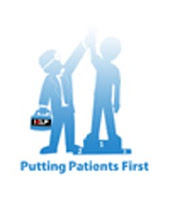What is osteoporosis?
Osteoporosis is a disease that affects your bones. It means that you have bones that are thin and brittle with lots of holes inside them like a sponge. This makes them easy to break. Osteoporosis can lead to broken bones (fractures) in the hip, spine, and wrist. These fractures can be disabling and may make it hard for you to live on your own.
Osteoporosis affects millions of older adults. It usually strikes after age 60. It's most common in women, but men can get it too.
What causes osteoporosis?
It's caused by a lack of bone strength or bone density. As you age, your bones get thinner naturally. But some things can make you more likely to have the severe bone thinning of osteoporosis. These things are called risk factors.
Age, gender, and body type risks
- Your age. Your risk goes up as you get older.
- Being a woman who has gone through menopause. After menopause, the body makes less estrogen. Estrogen protects the body from bone loss.
- Having a slender body frame
Family history risks
- Your family background - Osteoporosis tends to run in families.
- Your race - People of European and Asian background are most likely to get osteoporosis.
Lifestyle risks
- Smoking
- Not getting enough weight-bearing exercise
- Drinking too much alcohol
- Not getting enough calcium and vitamin D
What are the symptoms?
Osteoporosis can be very far along before you notice it. Sometimes the first sign is a broken bone in your hip, spine, or wrist after a bump or fall.
As the disease gets worse, you may have other signs, such as pain in your back. You might notice that you are not as tall as you used to be and that you have a curved backbone.
How is osteoporosis diagnosed?
Your doctor will ask about your symptoms and do a physical exam. You may also have a test that measures your bone thickness (bone density test) and your risk for a fracture.
If the test finds that your bone thickness is less than normal but is not osteoporosis, you may have osteopenia.
It's important to find and treat osteoporosis early to prevent bone fractures. Experts advise bone density testing for women age 65 and older. If you have a higher risk for fractures, it's best to start getting the test sooner.
How is it treated?
Treatment for osteoporosis includes medicine to reduce bone loss and to build bone thickness. Medicine can also give you relief from pain caused by fractures or other changes to your bones.
It's important to get enough calcium and vitamin D and take prescribed medicine for the disease.
You can slow osteoporosis with new, healthy habits. If you smoke, quit. Get plenty of exercise. Walking, jogging, dancing, and lifting weights can make your bones stronger.
Eat a healthy mix of foods that include calcium and vitamin D. Try yogurt, cheese, and milk (for calcium). Eat eggs, fatty fish, and fortified cereal (for vitamin D).
Making even small changes in how you eat and exercise, along with taking medicine, can help prevent a broken bone.
When you have osteoporosis, it's important to protect yourself from falling. Reduce your risk of breaking a bone by making your home safer. Make sure there's enough light in your home. Remove throw rugs and clutter that you may trip over. Put sturdy handrails on stairs. Try exercises to increase your strength and balance.
Our topics will teach you about
Browse health information
Healthwise® Knowledgebase
Follow us on:



No comments:
Post a Comment